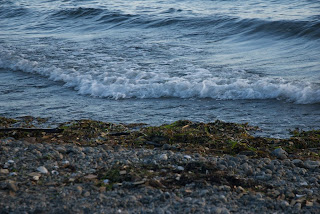
Photographs of waves can be fun but also difficult.
First choose if you want it to feel intimate or awesome. If you provide very little horizon, you create more of a feeling of closeness or intimateness. If you provide additional horizon space, you begin to show the size or openness of the image.
Capturing the waves themselves is a choice. If you set the shutter speed high, you capture the action. If you slow the shutter speed, you get more blur or movement. Most photos that I have seen like this also look more calming.
Another consideration for the waves is to have them in the 'right' position. It is nicer to not have a wave partially cut off. It has a feeling of 'flowing out' of the picture. This effect is similar to cutting a person off at a limb.




.jpg)
